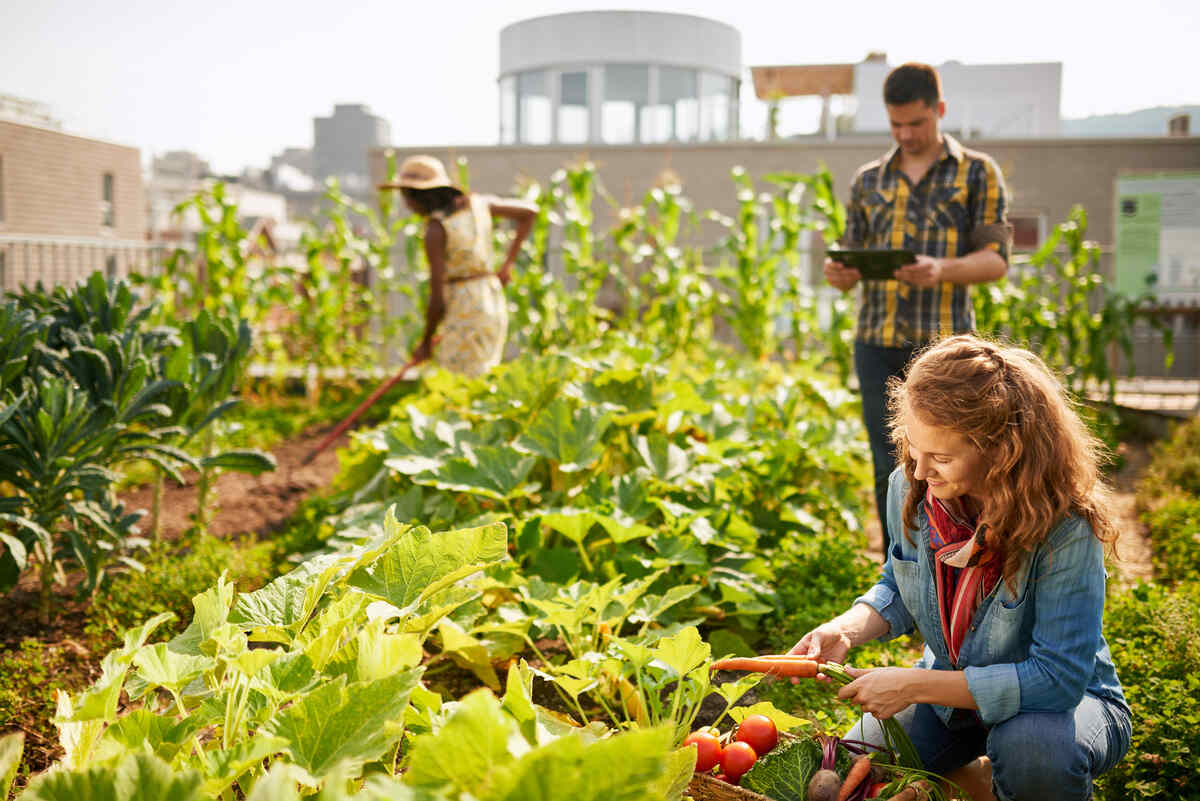The 4-Minute Rule for City Blooming
The 4-Minute Rule for City Blooming
Blog Article
City Blooming Fundamentals Explained
Table of ContentsNot known Factual Statements About City Blooming The Best Guide To City BloomingTop Guidelines Of City BloomingTop Guidelines Of City BloomingThe Facts About City Blooming Uncovered
Fascinated in growing food for sale in the City of Chicago? Below is a checklist of frequently asked inquiries concerning the regulations and guidelines that growers need to consider when preparing an urban farming task.
The zoning modification does not customize any kind of other codes taking care of composting, structure permits, purchasing or renting City owned property, organization licenses or environmental contamination. There are existing codes that control these issues and they stay in complete impact and might apply to your job. Community gardens are commonly had or taken care of by public entities, public organizations or community-based companies and kept by volunteers.
Urban ranches expand food that is planned to be offered, either on a not-for-profit or for-profit basis. Due to their commercial function, city ranches call for a company permit.
Rumored Buzz on City Blooming
Composting is permitted but only for plant product that is produced and utilized on site. The quantity of garden compost product can not go beyond 25 cubic yards at any provided time according to the requirements in 7-28-715 of the City's Municipal Code. Yes. Since the soil at most new yard sites requires changing, garden compost, dirt, timber chips, or various other products can be acquired to create or boost the expanding area - eco-friendly practices.

If a building license is called for then the hoophouse will certainly be taken into consideration an accessory building. You can learn even more about the structure license demands by getting in touch with the Division of Structures. The 25,000-square-foot size limitation is intended to stop a solitary community yard from dominating an offered block or taking away from the block's existing property or commercial personality.
The limit does not put on gardens situated in Public Open Space (POS) districts. Can there be greater than one area yard that is 25,000 square feet on a single block? Yes. The size restriction relates to specific yards, not to individual blocks. No. Secure fencing is not needed, nevertheless, yards that have big auto parking areas might be needed to install fence or other landscape design functions.
7 Easy Facts About City Blooming Shown
B1 & B2 areas require that all industrial usage activities be carried out inside your home. R areas limit industrial task. The laws reflect the function and intent of the Zoning Code. Is fencing required for urban ranches? Yes. Fences may be needed, in addition to landscaping and testing, for certain parking areas and outside work or storage space locations depending on location and the specific task happening.
Urban farms call for building authorizations and zoning approvals prior to construction (sustainability). Other forms of city evaluation may be called for depending on certain frameworks, activities, dimension, landscaping, licensing, public health and stormwater administration concerns.
The Division of Business Matters and Consumer Protection can help figure out the particular type of service certificate that's required. Off road car parking is required for most business tasks in Chicago. The required number of car parking areas is based on the number of staff members working on website and not the square video footage of the expanding space.
The 20-Second Trick For City Blooming

A city ranch can offer compost material generated on website, nonetheless, the procedure has to conform with the laws in 7-28-715 of the Chicago Municipal Code. Aquaponic systems are enabled indoors on urban farms in several zoning areas.
Approximately 5 hives or nests of honey bees might be maintained as an accessory use. However, beekeepers should register with the Illinois Department of Farming. For more details regarding the suggested zoning amendment you might speak to the Division of Housing and Economic Advancement, Bureau of Planning and Zoning at 312.744.8563.
, which takes location in rural areas at the edge of suburbs.
What Does City Blooming Mean?
, that seek to create social networks established on a common ethos of nature and neighborhood holism. These networks can create by way of formal institutional support, coming to be integrated right into local community preparation as a "transition community" activity for lasting city advancement.
In either instance, the more straight access to fresh veggie, fruit, and meat products that may be realised through city farming can boost food safety and food safety and security while decreasing food miles, bring about lower greenhouse gas discharges, therefore adding to climate adjustment reduction. Several of the first proof of metropolitan farming originates from Mesopotamia.
Report this page